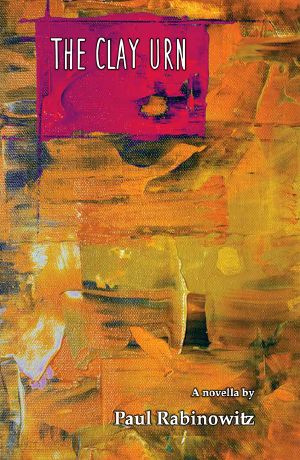The Clay Urn

- Authors
- Rabinowitz, Paul
- Publisher
- BookBaby
- Date
- 2020-09-08T00:00:00+00:00
- Size
- 1.64 MB
- Lang
- en
The Clay Urn is a book that carefully and authentically navigates the intricate spaces and places where love thrives during and post wartime. Between carnage and devastation there is humanity, always. This novella reminds us of all the ways we can love despite all the ways that our circumstances try to extinguish us.
At the core of it, The Clay Urn is a love story – a multilayered, multi character romance even, between two people; between a woman and her passion; between a people and their land. Rabinowitz, through his deeply lyrical prose, reminds us that not all things are destroyed during war time and that some can never be, like love between two people, like the desire to create something beyond our imagination, something more beautiful than our history, than our present.
One of the most intriguing aspects of the book is how deeply steeped the characters' memory and love are in the tradition of war, which their country is born of. The Clay Urn addresses the difficult question of identity shaped by tragedy – even home is not a given here. Even home is a word layered at once with trauma and love. The land itself, Israel – the ancestral home of so many – is as big a concept in this book and in between its largeness, Rabinowitz masterfully shows the subtle, small loves and tragedies of its individual inhabitants: "That's Tel Beit Shemesh. We found [the clay urn] on the other side of the slope. It's funny. I always think about my dad when I'm on the bus from Tel Aviv to Jerusalem. He loved these hills. After the Six Day War he marked off a bunch of antiquity sites and told me we'd go to each one." One of the main characters explains this to his beloved as they travel together, in love, on the same bus that will prove to be yet another tragedy in their lives.
The Clay Urn creates a multi-generational tale of trauma that trickles down from the political into the personal. But underneath that, there are generations of human resilience, of faith in one another and the land that has been for them, both a foundation for home and a brutal burial ground. The land itself becomes one of the main characters in this novella, a filter through which the other characters see themselves, a filter through which they love one another and through which they define love. It is a hard land, steeped in turmoil but also in treasures. Like any great love story, it is precisely this complexity that keeps the reader turning that page, nodding in silent agreement.
It is difficult to characterize this book: to say it is a war story is to leave out so much of its heart. To say that it is a realistic romance between two people is to leave out the complicated generational and familial relations that shape its skeletal structure. To say this is a love letter to a country, to a land, to a people is to leave out the subtleties of longing and desire that each character evokes. This book is all of these ideas in one and that is where its truth and beauty lie – in the way it reminds us again and again about the complicated and subtle layers that make up our experience. The Clay Urn is a testament to all the ways that love survives, endures and thrives, even in the most caustic environment.